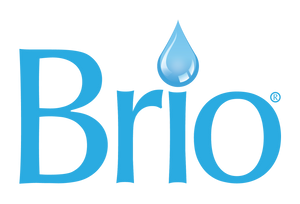As the name suggests, forever chemicals are substances that remain in the environment for many years. The term usually refers to per- and polyfluoroalkyl substances (PFAS), often used for fire retardant materials, non-stick pans and bakeware, waterproof coatings, and many other applications.
One concerning factor of PFAS is that, because they build up continuously everywhere within the environment, these chemicals eventually find their way into drinking water. Understanding the risks associated with PFAS contamination in drinking water can help you decide whether a water filtration system is the best option for your family.
What Are PFAS?
PFAS are synthetic compounds that all have a carbon-fluorine bond. This type of bond is one of the strongest in chemistry, so it takes a long time for these chemicals to break down.
PFAS have been used in various industries since the 1930s, notably in non-stick and waterproof coatings. Their use has increased over the years, and current research shows that at least seven million substances under the PFAS umbrella could pose environmental and health risks. Initially thought to be inert — non-reactive and therefore non-toxic — there are now concerns around the safety of forever chemicals in water.
Sources of PFAS in Water?

There are many sources of PFAS in drinking water, including factory wastewater. Numerous industrial and manufacturing processes utilize PFAS in anti-corrosion treatments for wires, cables, and piping. The resulting wastewater often includes PFAS, some forms of which can take up to a thousand years to degrade.
However, it’s not just big industries that introduce PFAS to the water supply. PFAS in household products is more common than you might think. Non-stick pans are a frequent source of these forever chemicals, particularly when householders scrub them until small particles are washed away. Paints, adhesives, and paper are all examples of PFAS-containing substances. Even the grease-retardant coating on microwaveable popcorn packs sometimes contains PFAS.
The potential environmental impact of PFAS is concerning because these chemicals could build up to dangerous levels with continued use. The EPA is still assessing the toxicity of PFAS, and research is inconclusive. There are certainly some health concerns that could prompt people to consider water testing and filtration.
Health Impacts of PFAS
So, what are the health effects of PFAS exposure? Short-term health effects tend to be most noticeable in the immune system. PFAS could make someone more likely to catch colds and other viral infections and even interfere with vaccine responses.
The long-term effects of PFAS may include thyroid problems, liver disease, reproductive issues, insulin dysregulation, and developmental problems. Children, in particular, could be susceptible to these effects. Some might wonder which is worse in water — PFAS or microplastics. However, both are problematic in different ways.
Microplastics become physical sediments in water, which are hard to eliminate without a high-quality filtration system. PFAS are chemical contaminants, some of which are used during plastic production, creating a strong connection between the two pollutants. In short, reducing the reliance on plastic could reduce the future volume of PFAS in the environment.
Regulations and Guidelines
Many countries, including the United States, now have PFAS regulations and guidelines determining what levels of PFAS in water are safe. The EPA considers maximum contaminant levels (MCLs 4-10 parts per trillion) depending on the exact type of chemical.
The EPA also noted that there could be some correlation between PFAS and cancer risk, and minimizing exposure to these chemicals was critical to avoid a health crisis. Europe has similar guidelines, with a limit of five micrograms per liter or one microgram per liter for PFAS known to carry specific health concerns.
Testing and Detecting PFAs in Water

If you’re concerned about PFAS levels in your drinking water, you can get it tested. Testing for PFAS in water is usually done via professional laboratory testing. A lab may send you a sample kit, which you fill with water and then send back to the facility. They’ll then let you know what the results are, and you can take action if necessary.
You can also source home testing kits, which may be less expensive but less accurate than lab tests.
Mitigation and Filtration Solutions

The next step after testing is usually to implement a water filtration solution. PFAS water filtration systems use either activated carbon filters or reverse osmosis. Activated carbon works via absorption, attracting and trapping PFAS molecules in its porous surface. Inevitably, some PFAS will still make it through these types of filters.
In contrast, reverse osmosis uses an incredibly thin membrane after an activated charcoal filtration stage. This design ensures that PFAS and all other contaminants are routed out of wastewater.
The Environmental Working Group recently discovered that filters employing the reverse osmosis method are highly effective at removing PFAS. They noted that regular maintenance and filter changes are essential for all water filtration devices to prevent the build-up of PFAS and ensure pure water.
Fighting Forever Chemicals with the Right Filtration Systems

PFAS aren’t going anywhere, but with the right water filters, it’s possible to reduce the volume of these chemicals that make their way into your household’s drinking water. Consider testing your water and implementing a water filtration system to keep you and your family safe, healthy, and hydrated.




